Volkswagen ID. Apocalypse: The Electric Car Experiment of a Global Auto Giant
![]() 07/04 2025
07/04 2025
![]() 598
598
In 2016, the Volkswagen Group unveiled the ID. Concept and MEB electrification platform, while Tesla launched its first affordable model, the Model 3, in the same year.
Over the past decade, the Volkswagen ID series has expanded significantly, introducing models such as the ID.3, ID.4, ID.5, ID.6, ID.7, and ID.Buzz. Global sales of the ID series have surpassed one million units. In contrast, Tesla's Model Y alone achieved over one million sales in a single year in 2024.
In China, Volkswagen's new energy vehicles led the market among joint venture automakers for a considerable period, with the ID series being the most recognized electric vehicle series among joint ventures. However, in the fiercely competitive Chinese new energy vehicle market, it is still considered a "no-name electric vehicle".
By the end of 2024, cumulative sales of the ID series in the Chinese market reached 550,000 units.
Objectively speaking, the Volkswagen ID series has achieved remarkable success. As a pioneer in the transition of traditional automakers to electrification and intelligence, the Volkswagen MEB platform has paved the way for dedicated electric vehicle platforms. The ID series retains the quality and reliability of German products, excels in driving dynamics, space utilization, and range performance, and has made strides in intelligence.
Had it not been for the explosive growth of China's new energy vehicle market, particularly the rise of new force models in recent years, the market performance of the Volkswagen ID series would have been even more impressive, potentially serving as a case study for others. Unfortunately, there are no ifs.
Volkswagen continuously adjusts and transforms its new energy product strategy based on market feedback. As the MEB platform enters the latter half of its life cycle, Volkswagen has new considerations and layouts for the ID series and the next generation of electric vehicles.
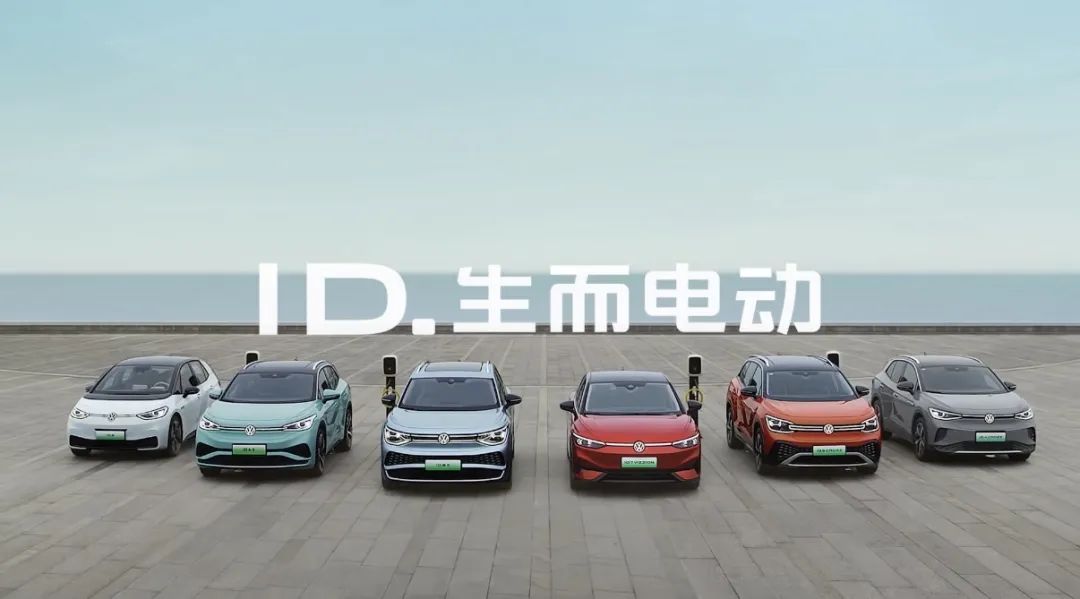
The ID.3, the pioneer of the ID series, was initially aimed at the European market, known for its agile handling, safety, reliability, and appealing design. Now, with its affordable price and continuously upgraded intelligence, it has become the sales leader of the ID series in China, with sales approaching 100,000 units in 2024.
While these sales figures pale in comparison to market stars selling over 10,000 units per month, let's consider the other models in the ID series. The ID.6, ID.7, and ID.Buzz have virtually no market presence.
The ID.Buzz, a fun, stylish, and practical "toy car," has plans to enter the Chinese market, but its high BOM (Bill of Material) cost and niche demand mean it is unlikely to become a hit.
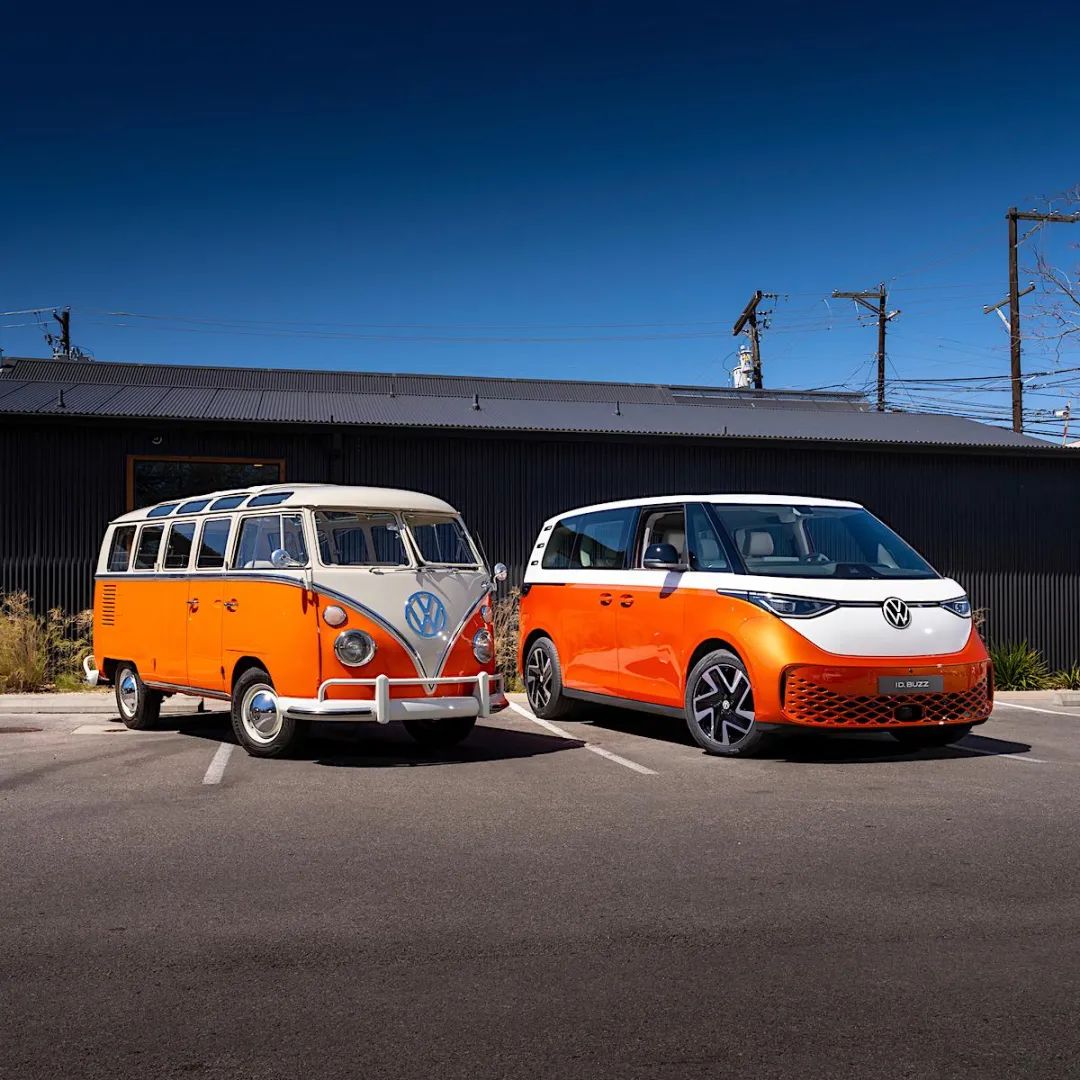
Here, I would like to specifically mention the ID.Unyx & Zhong, a product from Volkswagen Anhui, a joint venture between Volkswagen and JAC. When it was first launched in 2024, the pricing was too high, with a starting price exceeding 200,000 yuan, competing with star models like the Model Y and Xiaomi SU7. However, its product strength was insufficient to support such pricing, resulting in poor sales.
Subsequently, Volkswagen & Zhong reduced prices, with the current starting price falling below 150,000 yuan, aligning with its product strength. Nevertheless, sales have not improved. Besides pricing issues, there are also weaknesses in strategy, channels, marketing, and almost no brand recognition.
The ID series is built on Volkswagen's dedicated electric platform, MEB. The MEB platform optimizes the vehicle's space layout, shortens the front overhang, lengthens the wheelbase, and provides a spacious interior (for example, the rear legroom of the ID.4 is comparable to that of a medium-sized SUV). It supports rear-wheel drive/four-wheel drive, flexible battery pack configurations and range upgrades, and emphasizes software-driven features (such as OTA updates) that can update infotainment system functions and battery management strategies.

Early models faced software delays but now meet market standards. However, the intelligent experience is still inferior to mainstream new force brands.
ID series owners are quite satisfied with the product: reliability, safety, high space utilization, and true range performance instill a sense of reliability, making it a suitable companion for daily life. However, the lack of an intelligent experience is not fatal but annoying. When owners see other products flaunting their features, they can't help but feel a bit envious. Their own car, with superior hardware, seems dull in terms of software, lacking emotional intelligence and cleverness. It even needs to be called a "smart model" to boast.
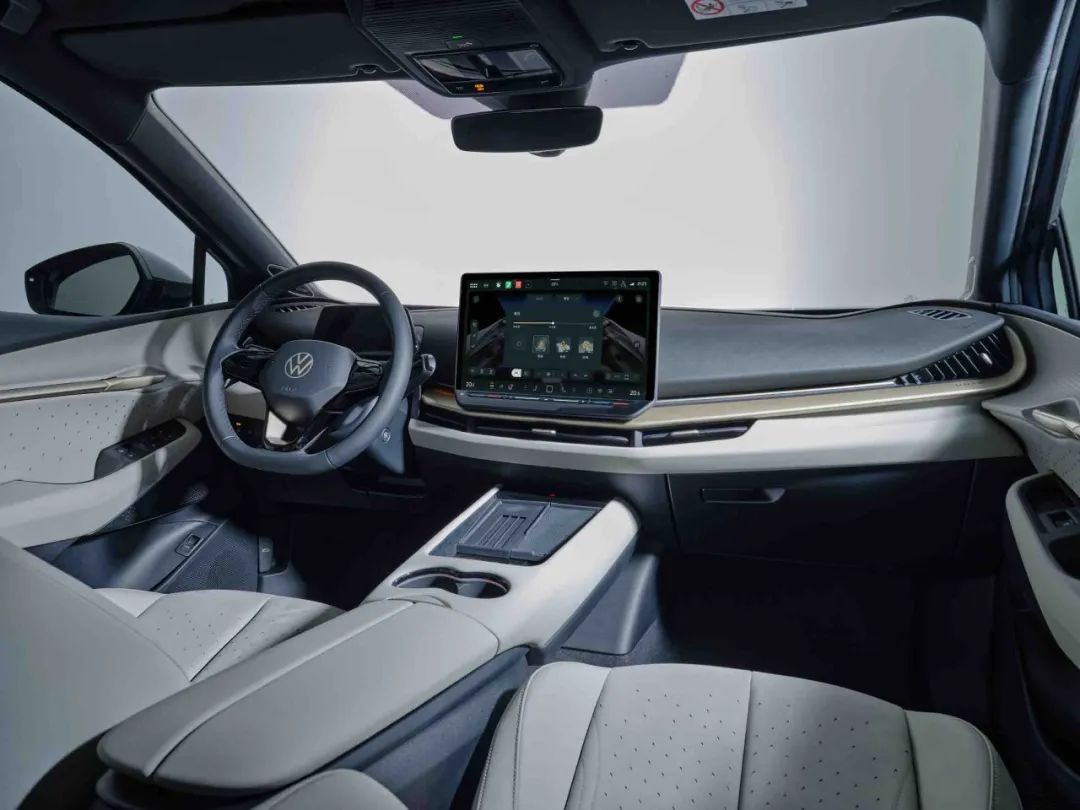
First, subsequent ID products will be renamed. Martin Sander, a member of the Volkswagen brand board, stated in an interview that Volkswagen's electric vehicles will no longer use the ID prefix from 2026 onwards. Instead, they will consider adjusting the naming strategy. The upcoming ID.2 all and ID. Every1 concept cars will be officially separated from the ID series when they enter production.
It is understood that the ID.2 may be renamed Polo in the future, and the ID.1, which will be released in 2027, may be associated with Lupo, Fox, or Up!.
This means that in the future, Volkswagen's electric vehicles will no longer be "newly established brands" but may instead adopt the traditional naming system familiar to Volkswagen car consumers. Of course, there may also be other more innovative and creative options.

From 2026 onwards, Volkswagen will launch a new generation of exclusive electric vehicles, including hybrids, in China, while gradually transitioning its existing gasoline vehicle product lines to hybrids, striving to maintain a leading position in the electrification transformation.
Volkswagen unveiled three new concept cars at this year's Shanghai Auto Show: FAW-Volkswagen ID. AURA, SAIC Volkswagen ID.ERA, and Volkswagen Anhui ID.EVO.
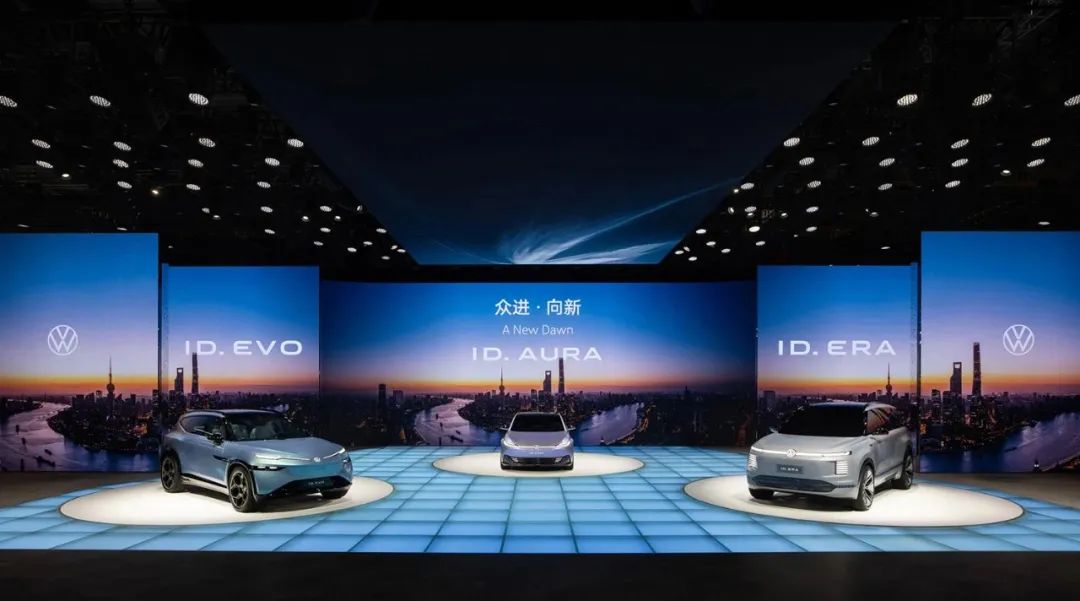
The ID.AURA is a compact pure electric sedan based on the CMP platform and CEA architecture; the ID.ERA is a full-size extended-range SUV expected to be launched in 2026; and the ID.EVO, a full-size pure electric SUV, is the first model jointly developed by Volkswagen and XPeng, also scheduled for launch in 2026.
From the product layout, it seems that no more MEB platform models will be introduced in the future. Does this mean that MEB models will gradually withdraw from the Chinese market and be replaced by other platforms, such as the CMP (China Main Platform) and CSP (China Scalable Platform)?
Volkswagen China officially stated: "Starting from 2026, the CEA (China Electronic Architecture) jointly developed by Volkswagen and XPeng will be applied to locally produced CMP and MEB platform models. CEA is jointly developed by Volkswagen (China) Technology Co., Ltd. (VCTC), CARIAD China, and XPeng. CARIAD China will play a key role in this project and develop and integrate the latest generation of advanced ADAS (Advanced Driver Assistance Systems) and smart cockpit software functions for the new architecture."
This statement affirms the key role of CARIAD China in the development of CEA and also retains the possibility of empowering MEB models with the CEA platform.
In summary, the new models of the ID series will adopt a fully localized development model, equipped with new batteries and the advanced CEA electronic and electrical architecture.
"I hope it will be faster, more stable, and more intelligent," said an old ID owner with anticipation.
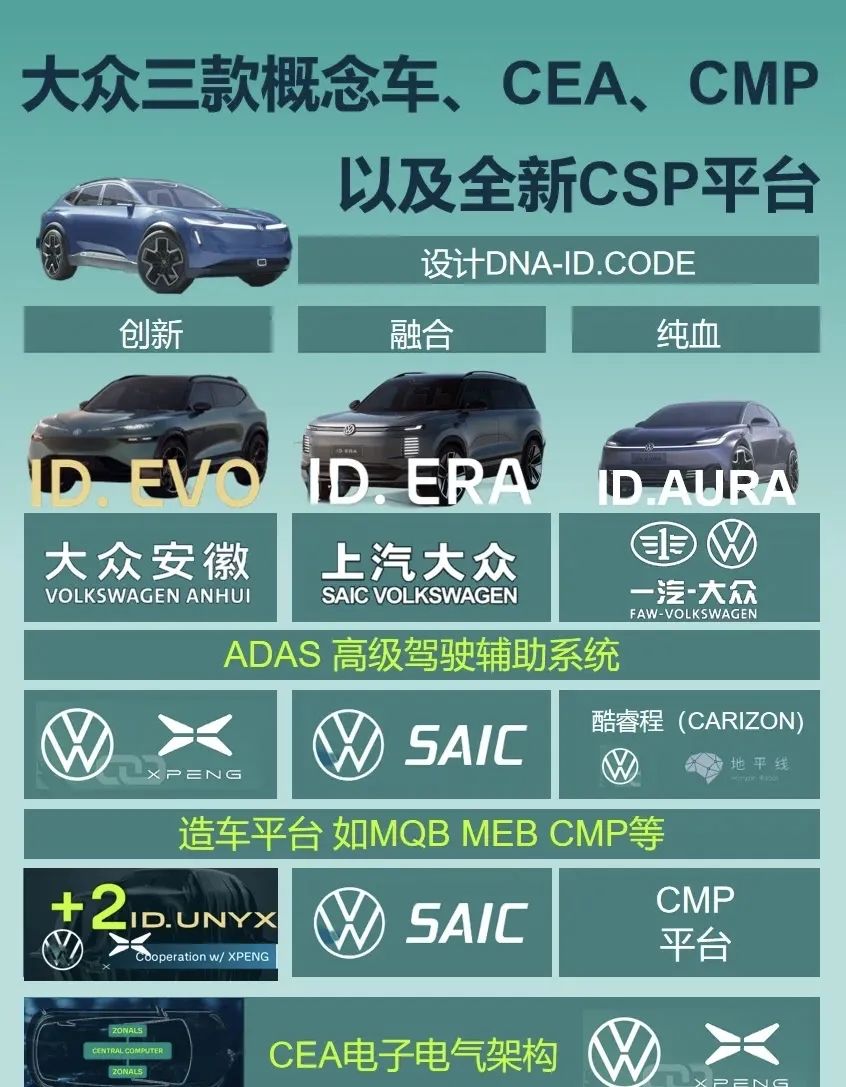
The ID series is a product of the era of Herbert Diess, the former CEO of the Volkswagen Group. With ambitious plans, Diess aimed to become a leader in the new energy vehicle industry alongside Tesla by launching the ID series and relying on CARIAD's autonomous software capabilities to outpace other traditional automakers.
In 2020, the pre-sale of the highly anticipated ID.3 electric vehicle was frequently delayed due to software issues. The poor market performance of the ID series and multiple delays in software delivery by CARIAD hindered Volkswagen's electric and intelligent transformation, causing several key electric vehicles to be unable to be launched as planned.
The overly aggressive push for electrification caused continuous conflicts between Diess and core shareholders as well as labor unions, leading to his dismissal and replacement by Oliver Blume.
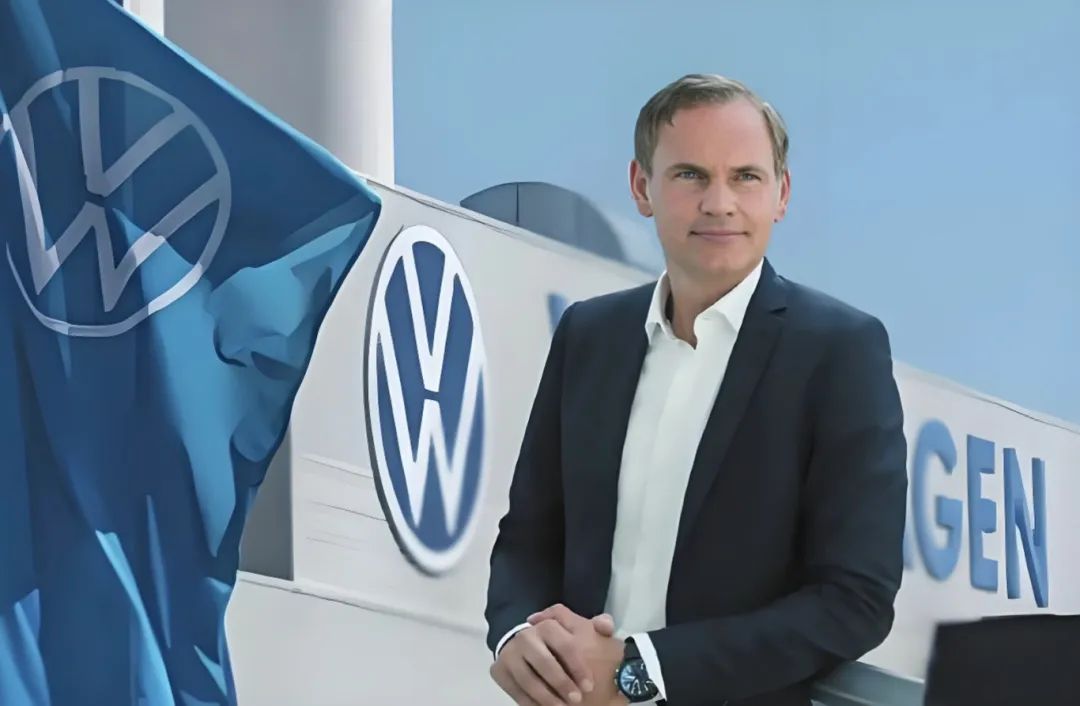
Unlike the Diess era, which emphasized independent research and development, the current CEO of the Volkswagen Group, Oliver Blume, advocates seeking external cooperation.
After taking over in 2022, Blume slowed down the electrification plan and subsequently carried out sweeping personnel reforms at CARIAD headquarters, replacing the CEO and laying off a significant number of employees, and appointing a new CEO for Volkswagen China.
In the Chinese market, Stephan Wöllenstein, who had been in office for less than three years, was replaced by Ralf Brandstätter, a member of the Volkswagen Group board, who took over as CEO of Volkswagen China, responsible for China operations.
On one hand, CARIAD's German headquarters continued to incur losses and made significant layoffs, but CARIAD China remained relatively stable and increased investment.
In November 2023, CARIAD and Chinese automotive chip maker Horizon Robotics established a joint venture, CARIZON, with Volkswagen investing 2.4 billion euros, which was Volkswagen's largest single investment in China.
In early 2024, Volkswagen appointed Han Sanchu, a Chinese national, as CEO of CARIAD China, leveraging his experience in software-defined vehicles at Huawei and Changan Automobile to allow CARIAD to play a key role in the development of the CEA platform. By investing in XPeng and jointly developing the new-generation electronic and electrical architecture CEA with XPeng, Volkswagen is sparing no effort to make up for its software shortcomings.
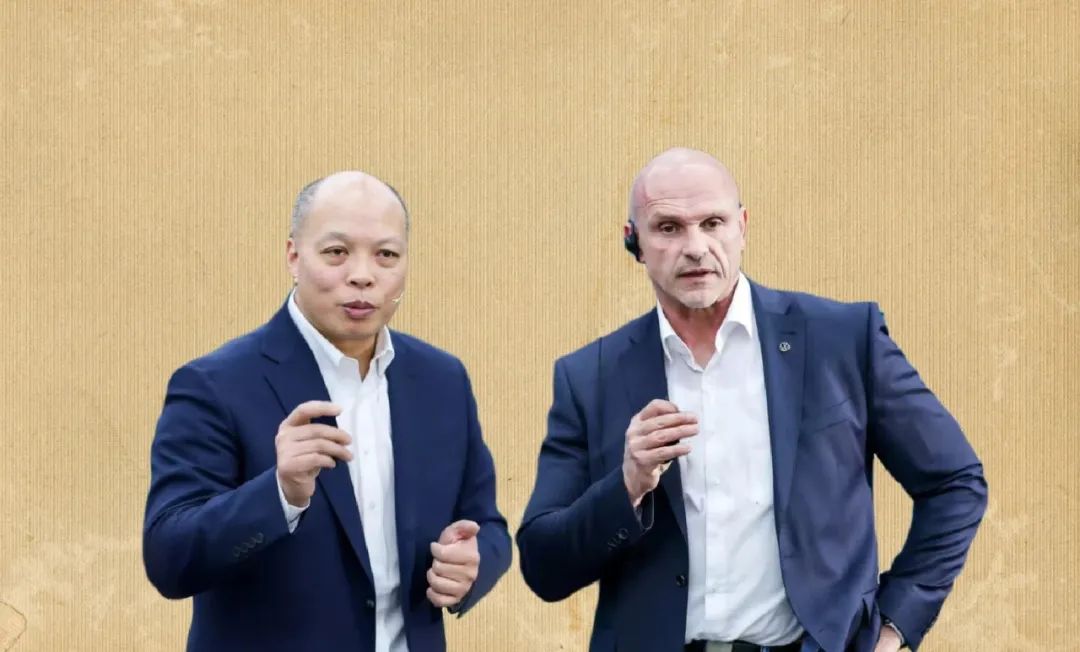 Left: Han Sanchu, CEO of CARIAD China; Right: Wu Borui, CEO of Volkswagen (China) Technology Co., Ltd. (VCTC)
Left: Han Sanchu, CEO of CARIAD China; Right: Wu Borui, CEO of Volkswagen (China) Technology Co., Ltd. (VCTC)
In September 2020, Stephan Wöllenstein, then CEO of Volkswagen China, stated, "Extended-range technology is outdated and has limited development potential."
Almost five years later, Volkswagen was forced by the Chinese market to build extended-range vehicles. In April of this year, Volkswagen's first extended-range concept car, the ID. ERA, was unveiled at the Shanghai Auto Show.
Market conditions are constantly changing, and extended-range technology is also continuously progressing. If Volkswagen had launched extended-range products in the Chinese market five years ago, what would the market have looked like? Unfortunately, there are no ifs.
After all, judging from the current trend in the domestic market, the ultimate goal of electrification is a bigger fuel tank.
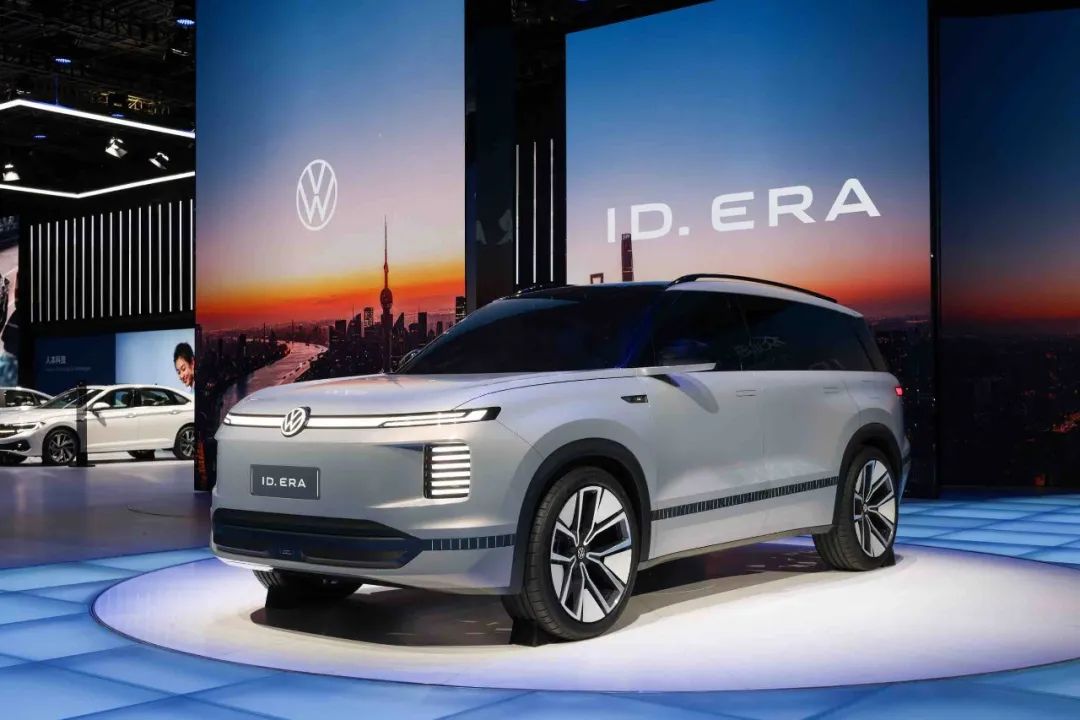
The MEB is one of the earliest electrification platforms globally. The MEB platform was planned for a 10-year cycle and a production volume of 10 million units, which means that the research and development costs are huge and need to be amortized over a long period and high sales volume. However, the ID series products have performed poorly, and the supply chain is mostly composed of traditional overseas Tier 1 suppliers, making costs difficult to reduce.
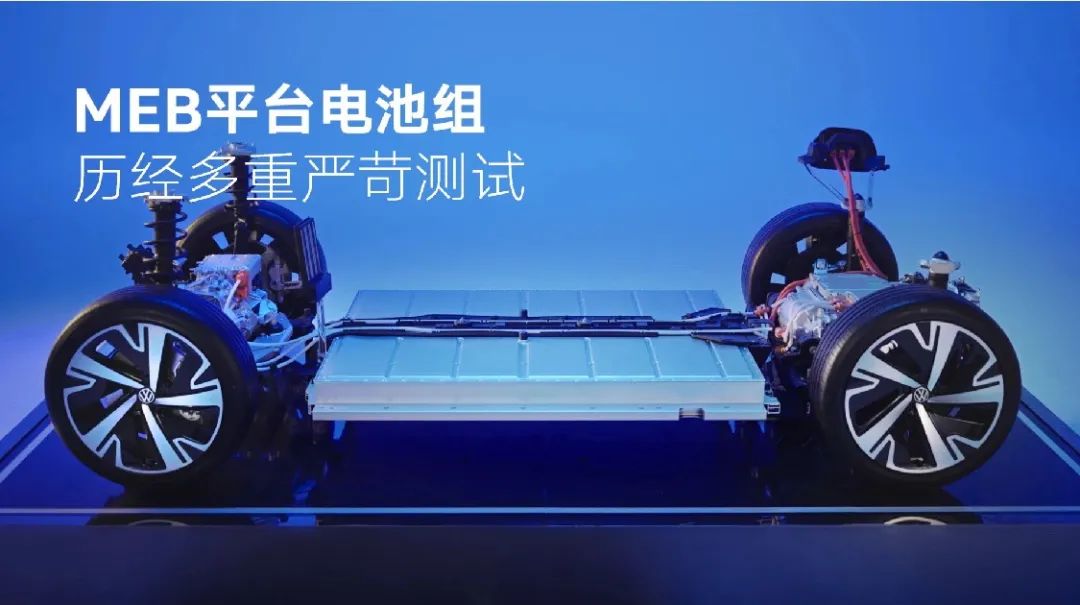
Is platformization important, especially in the face of fierce competition in the Chinese market? Tesla has not explicitly proposed platformization but has become the leader in global new energy vehicle sales with its two star products, the Model 3 and Y; Xiaomi has also gained popularity with its SU7. However, platformization is necessary for large automakers.
Geely's electric platform, HAO, has a large bandwidth and empowers Geely, Zeekr, Lynk & Co, Lotus, and Jiyue, among others. The models of various brands share development costs and can be launched quickly, even allowing Zeekr to "hone three swords in a year." Overall, Geely has achieved good sales and has a certain market share.
In the era of gasoline vehicles, the Volkswagen Group relied on the MQB (Modular Querbaukasten) platform and its derivative platforms to achieve success, which is still its core source of profit. This platform significantly reduced research and development and manufacturing costs by providing a shared technical foundation for its Audi, Volkswagen, Škoda, and other brands, realizing economies of scale and maximizing synergistic value.
The MEB platform also has a large bandwidth, capable of producing products ranging from the ID.3 to the ID.Buzz. However, the issues lie in cost and speed. The cost of ID series products is too high, and the speed is too slow.
After the MEB platform was introduced to China, standards could not be lowered, especially those related to safety. "For the B samples of battery packs and powertrains, Volkswagen requires 300 units. If the cost of each unit is 500,000 yuan, it amounts to 150 million yuan," an engineer from a large Tier 1 supplier told HiEV. "Some companies may only require five samples, which significantly reduces costs."
Moreover, Volkswagen's standards remain uncompromising upon entering the Chinese market. Numerous Volkswagen safety standards surpass both national and industry benchmarks. For instance, the ternary lithium battery pack faced prolonged delays in mass production due to its failure to meet Volkswagen's stringent criteria during the localization process.
"However, the public opted against lithium iron phosphate batteries, which was a strategic misstep," the aforementioned engineer asserts.
Safety-centric development must be spearheaded by Germany. A former FAW-Volkswagen engineer involved in introducing the ID series shared, "For a phone to unlock via Bluetooth, the signal must traverse to the server in Wolfsburg, Germany, and back, a round trip taking approximately one minute."
For specialized markets like China, where new energy vehicle users have diverse needs, products must cater to their specific requirements as much as possible. While platformization may not be essential, as enterprises expand, an electrification platform becomes vital for continuously launching market-responsive products at lower costs and faster speeds.
Despite the Xiaomi SU7's strong sales and the launch of the Xiaomi YU7, Xiaomi has also introduced the Modena platform to serve as a foundation for subsequent models.
Similarly, the GM Ultium platform, sharing a comparable predicament with MEB, confronts the same challenges.
The issue isn't platformization but whether the products under the platform can be swiftly and cost-effectively launched, flexibly meeting user needs.
Volkswagen vehicles are sold not only in the Chinese market but also across various countries in Europe, North America, Africa, Latin America, and beyond. For multinational automakers, a globalization strategy offers the most cost-effective approach in terms of input-output ratio.
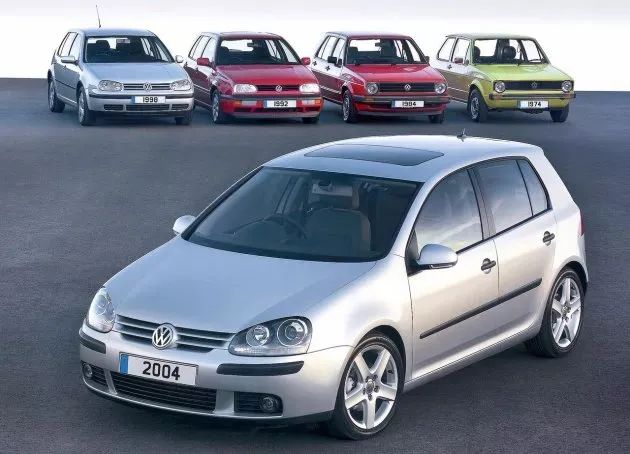
Nevertheless, China's explosive new energy vehicle market growth in recent years has posed significant challenges to multinational automakers' globalization strategies. Ignoring the world's largest single market is unthinkable, necessitating a balance between globalization and targeted development investments in key markets.
A decade ago, globally introduced cars were popular in China; however, they are now less applicable to the Chinese market.
Take the ID series as an example; it performs well in the European market but struggles in the Chinese market.
Multinational automakers are continuously adapting. Models specifically developed for the Chinese market, such as the GAC Aion Y Plus, Dongfeng Nissan Ariya, and the upcoming FAW Toyota BZ5, have garnered market attention and achieved solid sales since this year.
Volkswagen's upcoming models for the Chinese market next year are also highly anticipated.
Additionally, Volkswagen is increasing its investment in the United States.
On June 25, 2024, Volkswagen announced a joint venture with the American electric vehicle startup Rivian, investing a total of $5 billion, which will be injected into the joint venture in the United States in phases. This $5 billion equates to one-third of Volkswagen's 2024 net profit.
Volkswagen and Rivian will collaboratively develop a new electronic, electrical, and pneumatic architecture. In the short term, Volkswagen Group can leverage Rivian's existing electronic and electrical architecture and software platform for its own model development, such as applying it to models on the delayed Volkswagen SSP platform due to software issues.
Long-term, after 2025, both parties can utilize the joint venture's technological achievements for their respective new models. Against the current international backdrop, these $5 billion represent a goodwill gesture from globally reliant multinational companies like Volkswagen towards the United States.
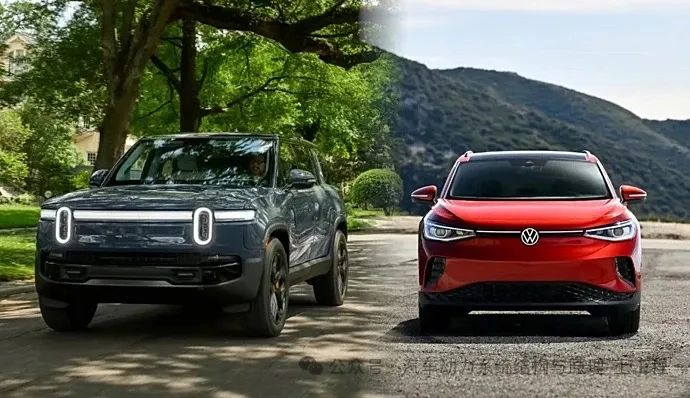
The increasingly polarized international situation has also impacted the automotive market.
A notable trend: In May of this year, Germany's top-selling pure electric vehicles were Volkswagen's ID.7 (first place), ID.3 (second place), and ID.4/5 (fourth place). Tesla's Model Y fell to 12th place.
In the first five months of 2025, Volkswagen Group's share of the German pure electric vehicle market reached 47.8%; in contrast, in September 2022, Tesla's Model Y even surpassed Volkswagen's long-reigning Golf to become the best-selling model.
This shift includes a decline in Tesla's product strength and the negative impact of Musk's political stance on the brand.
The reliability, safety, and reputation of Volkswagen's ID series make purchasing an ID the safest choice for German consumers. This not only reflects politics' influence on the automotive market but also confirms that the ID series can still compete in overseas markets, extending the MEB platform's lifespan and continuing to generate revenue for Volkswagen.
When one region falters, another thrives. Volkswagen's globalization strategy remains effective in navigating complex global market competitions.
Today's Chinese automobile sales market is vastly different from five years ago. Volkswagen's market share has been eroded by Chinese automakers like BYD, Geely, and Chery. As Volkswagen prepares to launch new intelligent and connected products in the new energy era, its marketing system appears unprepared for this transition.
From Tesla and new entrants pioneering the direct sales model to the rise of live streaming e-commerce in recent years, Volkswagen has failed to keep pace with domestic internet companies' decentralized content marketing strategies, which use algorithms to recommend personalized content to everyone.
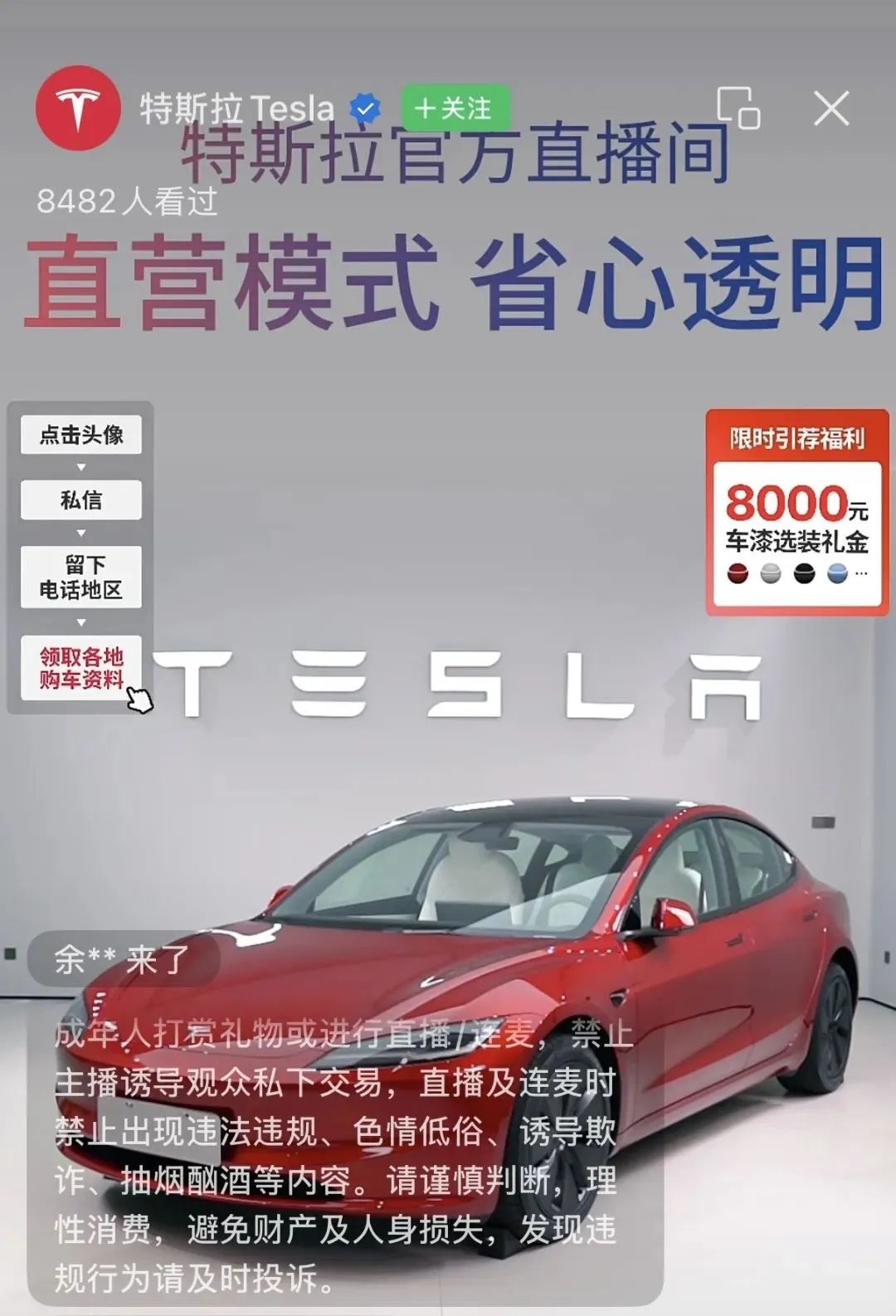
For joint venture or foreign-funded automakers, the market was once seller-driven, with cars selling effortlessly and even at a premium. Relying on their brands and products, Volkswagen simply manufactured cars and awaited dealers to pick them up. Automakers gradually released product information, from exterior design to interior trim and powertrains, following a predefined communication schedule. Media would then interpret these details, and users would read the news before visiting dealerships to view and purchase cars. Dealers were the primary sales force.
Today, it's a buyer's market, with automakers competing in an existing market. Even Tesla and Xiaomi must chase traffic and intensify marketing efforts.
The Xiaomi YU7's product launch resembled a large-scale e-commerce live stream. Lei Jun stood on stage, explaining to the audience in simple terms what salespeople typically detail in-store. With rich configurations and competitive prices, the audience was prompted to rush to buy as soon as the link went live.
When automakers at the traffic center are diligently selling cars, while those on the fringes adhere to outdated routines, and even Volkswagen's three Chinese joint ventures engage in internal sales consumption, the results naturally reflect in sales figures.
Furthermore, local companies like BYD, Geely, and Chery have a deeper understanding of local consumer mentality and have implemented more thorough channel penetration in the new energy market. Volkswagen's marketing system reform in China must be systematic.
The Volkswagen Group's strategic direction is generally correct. However, facing the new energy vehicle revolution—a "black swan" event—in China, its largest single market, although its response measures are fundamentally sound and it has begun laying the groundwork for transformation, the effectiveness still requires time to materialize. The transformation process urgently needs significant acceleration.
As Oliver Blume, CEO of the Volkswagen Group, recently told German media, "We have rested on our laurels for too long."
After such a prolonged rest, it's time to rise and act!







